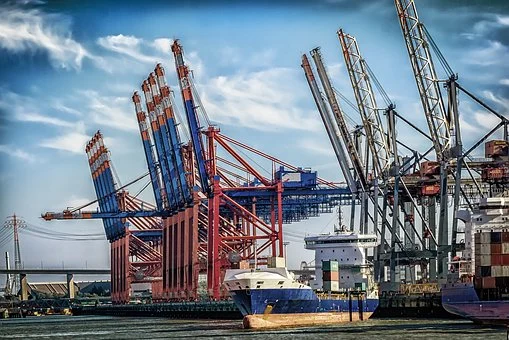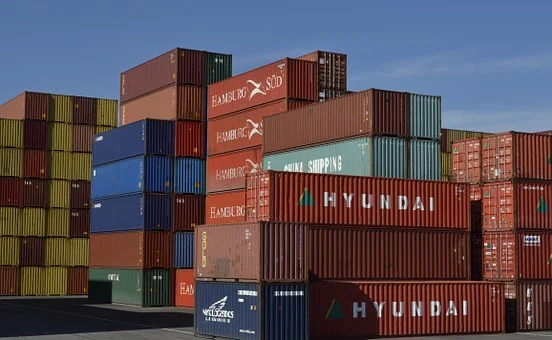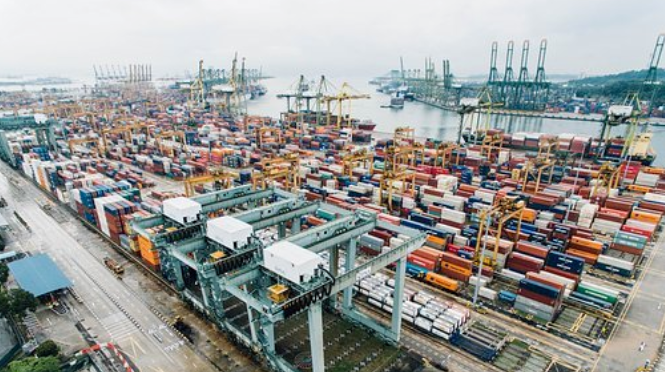The industry believes that the container crisis will last until 2022
The chaos and extreme phenomena of the market have been in the market for more than half a year. Whether it is congestion, empty box shortage and soaring freight rate, including the shortage of railway capacity, shortage of ships and trucks, are not the single root causes of the problem. The problem is - everything is in short supply.
"At the moment, we are at a stage where 10 per cent of the global capacity has been withdrawn from the market. There is no sufficient capacity to transport all the goods the owner wants to transport. This problem will not be resolved until the bottleneck is lifted. " This bottleneck will not only improve, but will worsen, and the shipping company can not help alleviate this impact.
Lars Jensen, analyst at Vespucci maritime, said that congestion at major ports and terminals such as Yantian and South China is bringing enormous pressure, more problems and uncertainties to the already hot container market, which "significantly increases" the risk of serious lack of capacity in the container market, which will continue until 2022.

According to sea intelligence maritime consulting data, 78% of the ships arriving at the US West Port are delayed, with an average delay of 10 days. Flexport said that at present, there may be delays in every link of the international supply chain. For example, the shipment of goods from Shanghai to Chicago warehouse has been extended from 35 days before the outbreak to 73 days now. Rotterdam, the largest North Sea port in Europe, has 80 container ships waiting in line to unload their cargoes because of the blockade of the canal; And Hamburg, one of the ports most directly affected by the canal incident. Port congestion means that the rate of ships on duty is reduced and the reliability is reduced.
Mai Boliang, chairman and CEO of CIMC, the world's largest container manufacturer, said that after monitoring the market, the slow return of empty containers will still plague the industry and the equipment crisis will not be solved in the near future.
"The problem is not lack of supply, but poor circulation of containers. There are two main reasons: first, the 20 busiest ports in the world are currently in a state of "traffic congestion", with long lines of ships and empty containers unable to be transported back; Two, the novel coronavirus pneumonia has caused many countries and regions to suspend their economic and industrial activities.
The shortage of equipment is so serious that the Chinese coined the word "one container is hard to find", which literally means "one container is rare".

The reason of shipping cost rising and supply chain chaos
At present, shipping costs have risen sharply, and fierce competition in shipping capacity has become a new normal. Coupled with the tight transport capacity, freight has been rising. In May, the Shanghai container freight index (SCFI), which reflects the spot market, rose by an average of 3341.69 points, up 18.1% from April.
There is little sign of easing in the short term. As the growth of global demand will continue to meet the limited capacity growth and the destructive impact of local blockade, freight rates may continue to soar in the second half of this year. In the final analysis, the reasons are as follows:
01
Continued global imbalances push prices higher
The problems that have accumulated since the new crown include the imbalance of goods production and demand, the different blockade and opening hours of various countries, the reduction of major routes and the shortage of empty containers. After the rapid economic recovery, with the further opening of the economy and the reconstruction of inventory in many links of the supply chain, the competition for shipping capacity has intensified.
02
There are few alternatives to shipping
For products with higher prices, we can usually choose other modes of transportation, such as the recently popular "China Europe train". However, at present, the capacity is limited and the tariffs are soaring. Even the freight cost of low value products has increased from about 5% to more than 20%.
03
Unbalanced recovery throughout 2021
As competition for shipping capacity continues, the recovery of imbalances will continue to exacerbate some of the problems in world trade, including empty container transfers. All of these increase the pressure of freight in the short term.
04
Ship's empty sailing and tight capacity
Globally, the capacity of major routes has returned to the level before the major blockade in 2020, although blank navigation (cancelled port calls) continued to reduce the scheduled capacity by 10% in the first quarter. There are signs of improvement in the quarter, averaging 4% as currently planned. But the cancellation part is a response to the delay, so although the system is still congested, the transportation capacity may continue to be removed from the system in a short time.
05
Port congestion and closures continue
This is well known. Yantian and Auckland in the United States are the "worst hit areas" of congestion in the near future. A large number of international liner have to wait for a long time or jump to the port directly, causing the butterfly effect to spread to all parts of the world.

Is the current situation of shipping almost attributable to the United States?
Why is the container demand so hot under the epidemic situation? How does the container supply chain get into trouble?
Most of the time, there are many reasons for a serious problem, but the current problems of the global container supply chain are mainly caused by the United States, which is the largest country in the world. If we simply and roughly sum up the reasons, it is because of the "greed" and "laziness" of the United States.
01
The unusually strong demand in the container market is almost entirely due to imports from the United States
The novel coronavirus pneumonia, a shipping consultancy Sea-Intelligence, concluded in a new survey that the growth of container market is at a normal level in fact. Only one factor is exceptional, that is, the US import has undergone a large increase in different times after the new crown pneumonia pandemic. In a simple and crude way, the extremely strong demand in the container market is almost entirely due to the imports from the United States.
Moreover, the agency said that soaring U.S. imports have led to serious bottlenecks in transportation, container shortages and serious delays, further pushing up freight rates and putting pressure on the supply chain, resulting in tight container market. Carriers have released record results and raised their expectations for the whole year.
02
The production capacity of US ports is insufficient to cope with the growth of demand
The Wall Street Journal of the United States recently published an article saying that for more than 10 years, the flow of goods in American ports has been blocked frequently. Less than 1% of Biden's $2.3 trillion infrastructure plan is devoted to port and waterway construction. The world-renowned media also asserts that "no matter how much it costs, all obstacles to the smooth flow of goods in U.S. ports will not be removed."
The COVID-19 pandemic has triggered the consumption expenditure of American consumers from consumer experience such as tourism to consumer goods such as electronics and home furnishing products. In addition, the U.S. government's behavior of "issuing money" to residents by issuing additional money also further promoted the consumption of consumer goods.
In addition, the covid-19 epidemic also has a great negative impact on the labor force in US ports: many workers receiving economic stimulus and unemployment benefits choose to stay at home, resulting in a serious shortage of labor in ports and warehouses. This has further slowed down the normal flow of containers to and from Asia, in fact reducing container capacity and pushing freight prices to record highs. At the same time, traffic is surging: according to IHS Markit, the largest ports in the Western Hemisphere, Los Angeles and long beach, have seen double-digit growth in imports since August last year, except in January this year.
03
Inefficiency of American port workers
Jeremy Nixon, chief executive officer of Japan's one shipping, once said that he works 24 hours a day in seven days in Asian ports, that is, 168 hours a week. In contrast, he works 16 hours a day in Los Angeles Long Beach port, 112 hours a week. While the working hours of truck drivers are only 88 hours per week, the working hours of truck drivers in Asian ports are still 168 hours.
From the perspective of work efficiency, according to the port efficiency data of IHS Markit, in China's ports of Shanghai, Qingdao and Yantian, container loading and unloading operations for large ships can be completed in 24 seconds on average, while in Los Angeles it takes 48 seconds.
For these reasons, the U.S. port system is vulnerable to unexpected surge in traffic volume for a long time.
Another reason for the interruption of port operation is the problem of shore based labor force. Decades of bad labor relations have led to a sharp rise in costs, hindered operators from extending working hours, limited the port's ability to realize terminal automation, and led to avoidable delays in the process of contract negotiation.